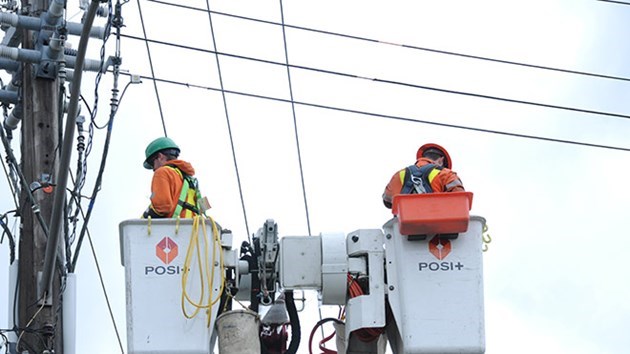In the wake of a scathing Auditor General’s report, the Ontario PCs this morning called on the Liberals to reimburse Ontario ratepayers for nearly $80 million in inappropriate expenses reflected on Ontarians’ hydro bills.
“What were these companies using ratepayer’s money for? Wealthy executives and Liberal insiders were expensing raccoon traps and scuba gear,” said Ontario PC Treasury Board critic Lisa MacLeod during Question Period.
The Auditor General revealed that nine companies billed ratepayers for $260 million in ineligible costs, of which only $168 million has been recovered.
"Under the Liberals, the average Ontario family has seen their hydro bills more than triple. In 2015 alone, 567,000 Ontario electricity customers were in arrears because they couldn’t afford their hydro bills" says a PC news release.
“Ratepayers are still on the hook for almost $80 million this is unacceptable. The money must be returned,” added MacLeod.
In addition to the raccoon traps and scuba gear, the Auditor General also revealed the insider executives expensed thousands of dollars annually for staff car washes, carpet cleaning, and landscaping. In particular, over a two year period, one generator claimed $175,000 for coveralls and parkas.
“Every year it’s the same story again and again," said Nipissing MPP Vic Fedeli. "The Auditor General exposes billions of dollars in needless waste that crowds out the services we all depend on."
Highlights from the Auditor General’s report:
- Nine gas and coal companies claimed $260 million in ineligible and egregious costs that hit ratepayers on their hydro bills, including expenses for raccoon traps, scuba gear, parkas and car washes.
- Since 2010, the Liberals have ignored Ontario Energy Board recommendations to update programs which generating companies have used to game the system.
- The Liberals have added significant hydro costs to families and small mom and pop shops as a result of a decision to transfer $245 million worth of electricity costs away from big multinational companies. This has been done mainly to cover ineffective renewable contracts.
- The Wynne Liberals spent $17.4 million on government advertisements that the Auditor General says are “intended to make the government look good.” The total government advertising budget has reached a 10-year high.
- The Auditor identified 321 projects worth $49 million between 2013-2014 and 2016-2017 that were awarded to hand-picked companies.
- Taxpayers paid nearly $19 million to operate and maintain 812 vacant buildings. In total the government could have saved $170 million a year on buildings that currently sit empty.
- One of the companies selected by Infrastructure Ontario to manage capital projects worth $900 million had performed poorly on a previous contract between 2011 and 2014.
- Students have been performing below the provincial standards in math since 2008-2009. It was not until 2016, that the province began allocating funding to school boards to improve student math achievement.
- For three of the four school boards visited by the Auditor General, nearly a quarter of special needs students are waiting longer than a year to receive psychological, and speech and language assessments.
- The Cabinet Committee on Emergency Management has not met for several years, and the province hasn’t updated the provincial risk assessment since 2012, meaning Ontario is not fully prepared for any new challenges relating to cybersecurity, climate change, and terrorism.
- Despite technological advances, the Ministry of Health has not updated the price list it pays to community labs since 1999. This would have resulted in savings of millions of dollars per year. In 2015-2016, the Auditor General estimated we overpaid laboratory service providers by at least $39 million.
- The Ministry of Health has not updated its PET scan eligibility criteria since 2013, meaning 41 per cent of the province’s capacity was unused.
- Only one third of the Auditor General’s recommendations from the 2015 report have been fully implemented.



